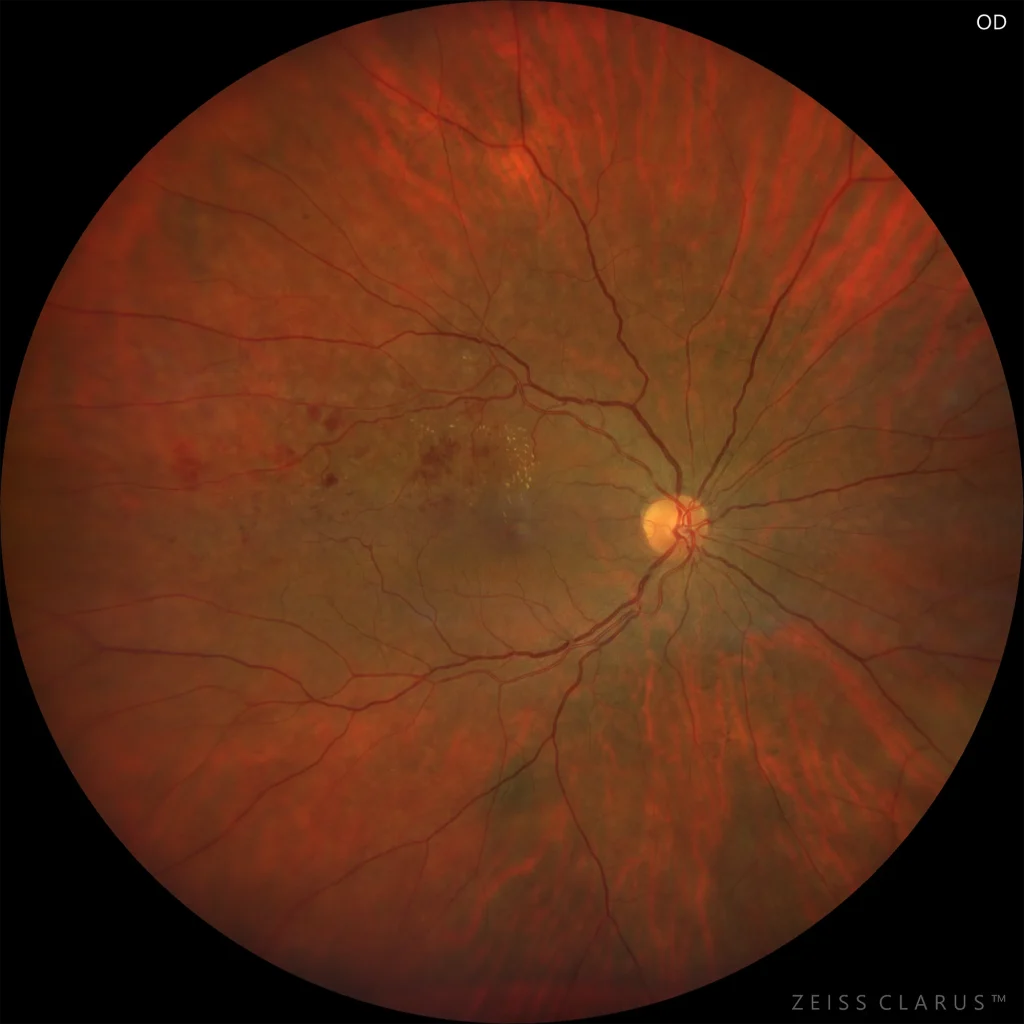Superior temporal venous branch occlusion
Description
Retinal vein occlusion (RVO) is the second most common cause of vision loss due to retinal vascular disease, after diabetic retinopathy. Branch vein obstruction (BRVO) is more common than central retinal vein obstruction (CRVO). BRVO can be major or primary, affecting a first-order branch, macular, or minor, affecting only one macular branch, or secondary, affecting a branch without macular involvement, and is generally asymptomatic. High blood pressure (HBP) and diabetes are the risk factors most frequently associated with the appearance of vascular occlusion in patients over 60 years of age. In patients younger than this age, however, it is necessary to rule out other causes of hypercoagulability (entities related to blood hyperviscosity, thrombophilia, etc.).

